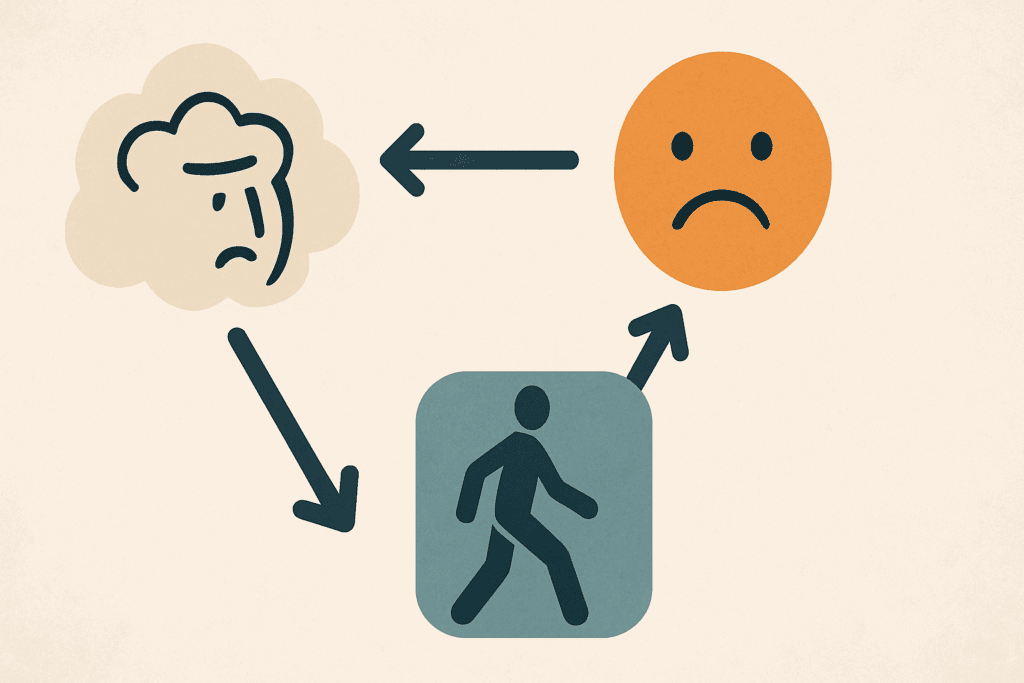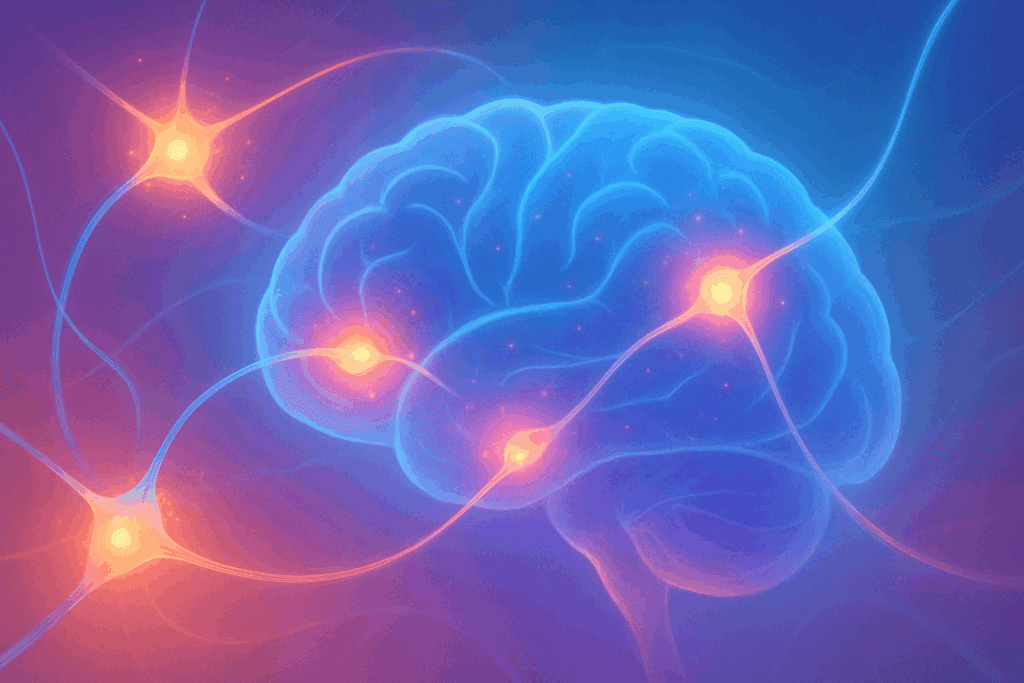Cognitive behavioral therapy (CBT) has emerged as one of the most widely researched and effective treatments for eating disorders. Whether addressing anorexia nervosa, bulimia nervosa, binge eating disorder, or other disordered eating patterns, CBT provides a structured, evidence-based approach that promotes sustainable behavior change. This article explores how CBT for eating disorders can help individuals develop healthier eating habits, rebuild their relationship with food, and embrace long-term recovery. Through a close examination of the core principles of cognitive behavioral therapy and its application in clinical settings, we uncover how this therapeutic model fosters mindful eating and supports holistic mental and physical well-being.
You may also like: How to Stop Emotional Eating and Regain Control: Mindful Nutrition Strategies That Support a Healthier Lifestyle

Understanding the Fundamentals of CBT for Eating Disorders
At its core, cognitive behavioral therapy is built on the premise that thoughts, feelings, and behaviors are interconnected. Individuals with eating disorders often struggle with negative self-perceptions, rigid beliefs about food and body image, and maladaptive coping strategies. These thought patterns can reinforce disordered eating behaviors, creating a self-perpetuating cycle of guilt, shame, and compulsive behavior. CBT therapy for eating disorders helps break this cycle by identifying and restructuring distorted cognitive patterns.
Therapists trained in CBT work collaboratively with clients to increase self-awareness and develop healthier coping strategies. Through techniques such as cognitive restructuring, behavioral experiments, and exposure therapy, individuals learn to challenge automatic thoughts and replace them with more balanced and realistic perspectives. For instance, a person with anorexia may harbor the belief that eating a full meal equates to losing control. CBT anorexia interventions would focus on examining the evidence for and against that belief, ultimately replacing it with a more constructive and compassionate view of nourishment and self-worth.
The structured nature of CBT therapy offers individuals a predictable and goal-oriented environment, which can be especially beneficial for those dealing with anxiety around food and body image. Regular sessions, homework assignments, and measurable progress reinforce accountability and self-efficacy. Over time, this structure promotes gradual behavioral changes that become the foundation of healthier eating habits.

The Role of CBT in Treating Anorexia Nervosa
CBT anorexia treatment is uniquely tailored to address the complex emotional and cognitive landscape associated with this condition. Anorexia nervosa is often accompanied by intense fear of weight gain, a distorted body image, and an overwhelming need for control. These psychological features can make recovery particularly challenging, especially when physical malnutrition further impairs cognitive flexibility and emotional regulation.
Cognitive behavioral therapy for eating disorders like anorexia aims to dismantle the core cognitive distortions that maintain restrictive eating behaviors. Therapists help individuals recognize how perfectionism, black-and-white thinking, and conditional self-worth drive their actions. Over time, CBT introduces more adaptive beliefs, such as the understanding that self-worth is not contingent on body size or control over food intake.
In clinical practice, CBT anorexia treatment may incorporate psychoeducation about nutrition and the physiological effects of starvation, as well as graded exposure to fear foods. This gradual reintroduction helps reduce anxiety and normalize eating behavior. Furthermore, therapists often guide clients in emotion regulation strategies that offer alternative outlets for managing distress. By teaching clients how to tolerate discomfort and uncertainty without resorting to disordered behaviors, CBT fosters emotional resilience and reduces reliance on harmful coping mechanisms.
One of the most promising aspects of CBT for anorexia is its potential to restore autonomy and self-trust. As individuals begin to challenge their internal rules and judgments, they develop a more compassionate and flexible relationship with themselves. This shift not only supports recovery from the eating disorder but also contributes to broader mental wellness.

Integrating Mindful Eating Practices Within CBT
Mindful eating—a practice that emphasizes present-moment awareness, sensory engagement, and non-judgmental observation—aligns naturally with the goals of CBT. While CBT targets the underlying cognitive and emotional patterns associated with disordered eating, mindful eating adds a somatic and experiential layer to recovery. Together, these approaches foster a holistic transformation in how individuals relate to food and their bodies.
CBT therapy for eating disorders increasingly incorporates elements of mindfulness to enhance treatment outcomes. Clients are encouraged to slow down during meals, pay attention to hunger and satiety cues, and observe their thoughts without reacting to them. For individuals accustomed to eating on autopilot, bingeing in secret, or avoiding food altogether, these practices introduce a sense of agency and curiosity.
Through CBT, clients may identify thought patterns like “I must clean my plate” or “I can’t eat carbs because they make me gain weight.” Mindful eating invites them to notice these thoughts, examine their origins, and choose whether to act on them. This pause creates space for intentional decision-making and helps rewire the neural pathways associated with impulsive or avoidant eating behaviors.
Moreover, mindful eating reduces shame and increases self-compassion. Instead of viewing food as the enemy or a source of guilt, clients learn to appreciate its nourishing and pleasurable qualities. CBT for eating disorders supports this shift by challenging the cognitive scripts that demonize food and by reinforcing more balanced beliefs about health and self-care. As a result, eating becomes less about control and more about connection—with one’s body, needs, and values.

Rebuilding Body Image and Self-Esteem Through CBT
Negative body image is both a symptom and a perpetuating factor of many eating disorders. Individuals often engage in body checking, comparison, and self-criticism, which reinforce feelings of inadequacy and shame. CBT therapy for eating disorders tackles these behaviors head-on by helping clients understand their function and consequences.
One of the key interventions involves thought records and behavioral experiments aimed at testing assumptions about appearance and worth. Clients might be asked to record situations in which they feel triggered by body dissatisfaction, identify the thoughts associated with those feelings, and evaluate the evidence supporting them. Over time, they begin to recognize patterns and develop alternative, more empowering narratives.
For example, a client who avoids social situations due to fears about being judged for their appearance may discover through CBT that these fears are largely unfounded. They may learn that their value to others extends beyond physical appearance and that participation in meaningful activities improves self-esteem. This realization can be deeply liberating and catalyze broader changes in self-concept.
CBT anorexia interventions often emphasize body neutrality or acceptance rather than an idealized notion of self-love. This nuanced approach recognizes that for individuals who have spent years battling body image issues, moving from hate to love may feel unattainable. Instead, CBT encourages clients to respect their bodies for what they can do rather than how they look, laying the groundwork for more authentic and sustainable self-worth.

The Neurobiological and Behavioral Mechanisms at Work
CBT for eating disorders is not merely a set of cognitive exercises; it also engages key neurobiological mechanisms involved in habit formation, reward processing, and emotion regulation. Research indicates that individuals with eating disorders often exhibit altered neural activity in areas related to impulse control, anxiety, and reward anticipation. CBT helps recalibrate these systems by fostering new learning and adaptive behavioral patterns.
Through repeated practice of alternative thoughts and behaviors, CBT strengthens synaptic connections that support recovery-oriented choices. This process, known as neuroplasticity, means that the brain can rewire itself in response to new experiences. Clients who consistently challenge restrictive eating rules, for instance, may eventually find those rules lose their grip and no longer feel automatic.
Furthermore, CBT promotes behavioral activation, a technique that encourages individuals to engage in activities aligned with their values. This shift from avoidance to engagement can restore a sense of purpose and pleasure, which are often diminished by chronic disordered eating. As clients build positive reinforcement through meaningful actions—whether that’s cooking a nourishing meal, going for a walk, or connecting with a friend—they create a lifestyle that supports both mental and physical health.
The role of emotion regulation cannot be overstated. Many individuals with eating disorders use food-related behaviors to manage overwhelming emotions. CBT provides alternative tools, such as distress tolerance techniques, journaling, and cognitive reframing, to help clients navigate emotional challenges without resorting to harmful behaviors. These skills not only reduce symptom severity but also contribute to greater resilience and life satisfaction.
CBT in the Context of a Multidisciplinary Treatment Approach
While CBT therapy for eating disorders is highly effective on its own, it is often most successful when integrated into a multidisciplinary treatment plan. Collaboration between mental health professionals, dietitians, physicians, and family members ensures that all aspects of the individual’s well-being are addressed. This comprehensive approach is particularly important for individuals with complex presentations, such as those who have co-occurring depression, anxiety, or trauma histories.
In the context of CBT anorexia treatment, medical monitoring is essential to ensure that nutritional rehabilitation occurs safely. CBT therapists work alongside dietitians to reinforce consistent eating patterns and dispel myths about nutrition. At the same time, therapists may coordinate with psychiatrists to manage comorbid conditions or address the need for medication support.
Family-based interventions can also enhance the effectiveness of CBT, especially in adolescents. Parents and caregivers are taught how to support healthy eating behaviors, set appropriate boundaries, and model emotional regulation. When the family system is aligned with treatment goals, the likelihood of lasting recovery increases.
Moreover, peer support and group therapy provide valuable opportunities to practice CBT skills in social contexts. Individuals gain insight from shared experiences, challenge isolation, and build a sense of belonging. These relational elements, while not exclusive to CBT, amplify its impact by situating change within a supportive and empathetic community.

Real-Life Applications and Success Stories
Many individuals who engage in cognitive behavioral therapy for eating disorders report significant improvements not only in their eating behaviors but also in their overall quality of life. They describe feeling more in control, less consumed by obsessive thoughts, and more connected to their values. These testimonials underscore the transformative potential of CBT when applied consistently and with professional guidance.
For instance, consider a college student who struggled with binge eating as a response to academic stress. Through CBT, they learned to identify the early signs of anxiety, implement grounding exercises, and plan meals in advance. Over time, the urge to binge diminished, and they developed a more flexible and nourishing relationship with food. Similarly, a middle-aged woman with a decades-long history of restrictive eating found relief in CBT anorexia treatment. By confronting her core beliefs about control and worth, she gradually rebuilt trust in her body and began to enjoy food again without fear.
These stories illustrate the depth and versatility of CBT for eating disorders. They demonstrate that with the right support, change is possible—even after years of suffering. They also highlight the importance of personalized care, as each individual’s journey is shaped by unique experiences, values, and challenges.
Frequently Asked Questions: CBT for Eating Disorders
1. How does CBT address emotional trauma that may underlie eating disorders? Cognitive behavioral therapy for eating disorders doesn’t directly treat trauma in the way specialized trauma therapies do, but it does help individuals understand how past experiences may have shaped their current thought patterns. Many people struggling with eating disorders have unresolved emotional wounds that fuel negative self-beliefs and maladaptive behaviors. In CBT, clients learn to identify how trauma-related cognitions—such as feeling unworthy or unsafe—manifest in eating habits. While CBT for eating disorders is not a substitute for trauma-focused interventions like EMDR, it offers stabilizing tools for managing symptoms. By building cognitive flexibility and emotional awareness, CBT therapy for eating disorders creates a strong foundation for further trauma work when needed.
2. Can CBT be adapted for individuals who are resistant to traditional talk therapy? Yes, one of the strengths of CBT for eating disorders is its adaptability for clients who might struggle with conventional verbal processing. Therapists often incorporate visual tools such as thought records, behavior chains, or guided imagery to help clients conceptualize their internal experiences. CBT anorexia interventions may include concrete assignments like food diaries or self-monitoring logs, which are especially useful for clients who prefer action-oriented work. Additionally, CBT emphasizes collaborative goal setting, allowing clients to feel more engaged and empowered in their treatment. These structured yet flexible elements make CBT therapy for eating disorders suitable for a wide range of personalities and communication styles.
3. What role does cultural context play in CBT therapy for eating disorders? Cultural values and societal norms heavily influence body image, food beliefs, and mental health stigma. CBT therapy for eating disorders must account for these contextual factors to be effective. For instance, individuals from collectivist cultures might experience shame about mental health issues or feel pressure to conform to family expectations around eating. A culturally informed CBT approach explores how these influences shape cognitive distortions and eating behaviors. Therapists trained in culturally responsive care are more likely to adjust their interventions so that clients feel seen and respected within their unique social identities, enhancing the overall effectiveness of cognitive behavioral therapy for eating disorders.
4. How does CBT help individuals navigate social situations involving food? Many people with eating disorders experience intense anxiety in social settings, particularly those involving food, such as parties or family dinners. CBT for eating disorders uses exposure-based strategies to gradually desensitize individuals to these triggers. Clients might role-play scenarios in session, develop coping scripts, or engage in planned exposures where they practice eating in public. CBT therapy for eating disorders also targets the underlying beliefs that drive social avoidance, such as fears of judgment or loss of control. Over time, clients build the confidence to participate in these events without compromising their recovery goals, allowing for greater social integration and improved quality of life.
5. Are there digital or app-based CBT tools for managing eating disorder symptoms? In recent years, several digital platforms have emerged to support CBT for eating disorders through mobile apps, online workbooks, and virtual therapy programs. These tools often provide self-monitoring features, thought tracking, and behavioral prompts that align with traditional CBT methods. CBT anorexia apps, for instance, may include guided meal plans or body image journaling exercises designed to reduce anxiety. While these tools are not replacements for in-person therapy, they can be particularly beneficial for individuals in remote areas or on waitlists for specialized care. When used under clinical supervision, digital CBT therapy for eating disorders can extend the reach of treatment and support daily habit reinforcement.
6. Can CBT support long-term recovery after inpatient or residential treatment? Absolutely. After completing intensive programs, individuals often face new challenges as they reintegrate into daily life. CBT for eating disorders serves as a crucial transitional framework by reinforcing coping skills and relapse prevention strategies. In outpatient settings, CBT therapy for eating disorders helps clients identify high-risk situations and practice the skills they acquired in more controlled environments. It also provides a space to address emerging stressors that could trigger relapse, such as returning to work or navigating family dynamics. By focusing on maintenance and resilience, CBT supports sustainable recovery beyond the clinical setting.
7. How do CBT techniques differ when applied to different types of eating disorders? While the core principles of CBT remain consistent, specific techniques are tailored to the distinct cognitive and behavioral patterns of each disorder. For example, CBT anorexia treatment emphasizes increasing caloric intake, challenging rigid food rules, and restoring a healthy weight. In contrast, CBT for binge eating focuses more on emotion regulation and breaking the cycle of shame and impulsivity. CBT therapy for eating disorders like bulimia includes interventions to disrupt the binge-purge cycle and replace it with more adaptive coping mechanisms. Each protocol is structured but individualized, allowing therapists to meet clients where they are in their recovery journey.
8. What happens if CBT doesn’t seem to be working for someone? Not every individual responds to CBT in the same way, and that’s okay. If cognitive behavioral therapy for eating disorders is not producing the desired outcomes, therapists may explore alternative or supplementary approaches. These can include dialectical behavior therapy (DBT), acceptance and commitment therapy (ACT), or interpersonal psychotherapy (IPT). Sometimes, treatment stagnation is due to underlying factors like unresolved trauma, co-occurring conditions, or external stressors that need to be addressed. CBT therapy for eating disorders can also be modified to suit different stages of readiness, making it a flexible tool rather than a one-size-fits-all solution.
9. How does CBT address the fear of weight gain in clients with anorexia? Fear of weight gain is a hallmark of anorexia and one of the most challenging barriers to treatment. CBT anorexia interventions approach this fear through gradual exposure and cognitive restructuring. Clients begin by confronting smaller fears—such as eating a fear food in session—and progress toward more anxiety-provoking situations, like seeing weight changes on a scale. Simultaneously, CBT for eating disorders challenges the underlying belief that weight gain equates to failure or loss of control. Over time, clients learn to tolerate distress and reevaluate their values, leading to greater acceptance of a weight range that supports health and functionality.
10. What future developments are emerging in the use of CBT for eating disorders? The landscape of cognitive behavioral therapy for eating disorders continues to evolve, with emerging research supporting enhanced protocols and novel delivery methods. For instance, third-wave CBT approaches increasingly integrate mindfulness, compassion-focused therapy, and somatic awareness. Researchers are also exploring the use of virtual reality to simulate real-life food challenges in a controlled therapeutic setting. Additionally, machine learning algorithms may soon personalize CBT therapy for eating disorders by predicting treatment response and adjusting interventions in real time. These innovations promise to refine and expand the reach of CBT anorexia and other eating disorder treatments, offering more nuanced care for diverse populations.
Reflecting on Recovery: The Lasting Impact of CBT for Eating Disorders
Cognitive behavioral therapy for eating disorders offers more than symptom reduction; it provides a roadmap for reclaiming health, identity, and purpose. By addressing the cognitive distortions, emotional triggers, and behavioral patterns that fuel disordered eating, CBT fosters deep and lasting change. Whether used as a standalone treatment or as part of a multidisciplinary approach, CBT equips individuals with the skills and insights needed to navigate recovery with resilience and self-compassion.
CBT for eating disorders aligns seamlessly with mindful eating and healthier lifestyle choices. It encourages clients to engage with food in a way that is grounded in awareness, respect, and attunement. This transformation is not merely about changing what one eats, but about changing how one thinks, feels, and lives.
As research continues to validate the effectiveness of CBT anorexia interventions and broader CBT therapy for eating disorders, its relevance in mental health care becomes increasingly apparent. For individuals seeking freedom from the grip of disordered eating, CBT offers hope rooted in science and guided by empathy. Through intentional practice and supportive relationships, recovery becomes not just a goal but a lived reality—a testament to the power of the human mind to heal and grow.
Was this article helpful? Don’t let it stop with you. Share it right now with someone who needs to see it—whether it’s a friend, a colleague, or your whole network. And if staying ahead on this topic matters to you, subscribe to this publication for the most up-to-date information. You’ll get the latest insights delivered straight to you—no searching, no missing out.
Further Reading:
Exploring the most common eating disorders
Cognitive Behavioral Therapy for Eating Disorders
Recent Advances in Cognitive-Behavioural Therapy for Eating Disorders (CBT-ED)
Disclaimer
The information contained in this article is provided for general informational purposes only and is not intended to serve as medical, legal, or professional advice. While NewsHealthWatch strives to present accurate, up-to-date, and reliable content, no warranty or guarantee, expressed or implied, is made regarding the completeness, accuracy, or adequacy of the information provided. Readers are strongly advised to seek the guidance of a qualified healthcare provider or other relevant professionals before acting on any information contained in this article. NewsHealthWatch, its authors, editors, and contributors expressly disclaim any liability for any damages, losses, or consequences arising directly or indirectly from the use, interpretation, or reliance on any information presented herein. The views and opinions expressed in this article are those of the author(s) and do not necessarily reflect the official policies or positions of NewsHealthWatch.

